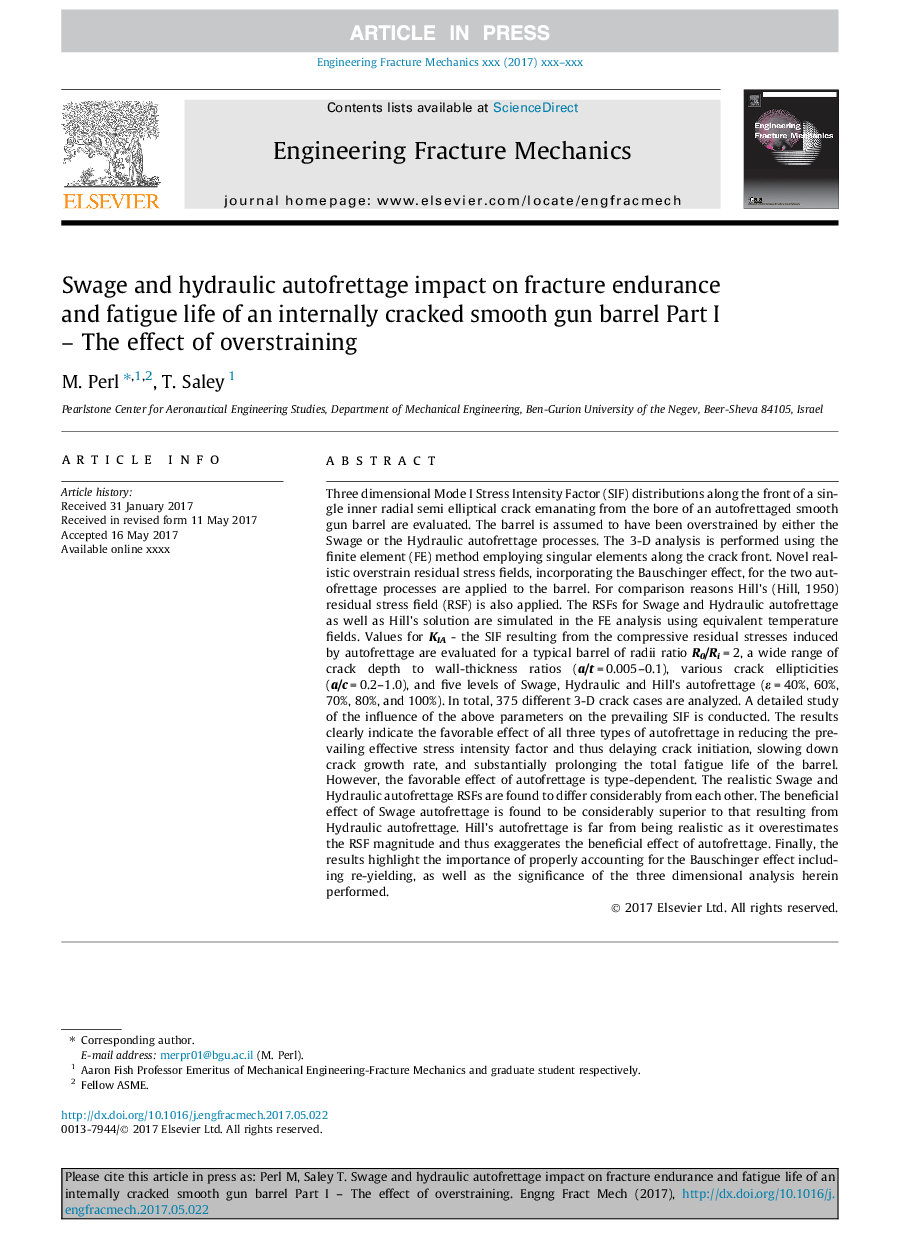| Article ID | Journal | Published Year | Pages | File Type |
|---|---|---|---|---|
| 5013814 | Engineering Fracture Mechanics | 2017 | 14 Pages |
Abstract
Three dimensional Mode I Stress Intensity Factor (SIF) distributions along the front of a single inner radial semi elliptical crack emanating from the bore of an autofrettaged smooth gun barrel are evaluated. The barrel is assumed to have been overstrained by either the Swage or the Hydraulic autofrettage processes. The 3-D analysis is performed using the finite element (FE) method employing singular elements along the crack front. Novel realistic overstrain residual stress fields, incorporating the Bauschinger effect, for the two autofrettage processes are applied to the barrel. For comparison reasons Hill's (Hill, 1950) residual stress field (RSF) is also applied. The RSFs for Swage and Hydraulic autofrettage as well as Hill's solution are simulated in the FE analysis using equivalent temperature fields. Values for KIA - the SIF resulting from the compressive residual stresses induced by autofrettage are evaluated for a typical barrel of radii ratio R0/Ri = 2, a wide range of crack depth to wall-thickness ratios (a/t = 0.005-0.1), various crack ellipticities (a/c = 0.2-1.0), and five levels of Swage, Hydraulic and Hill's autofrettage (ε = 40%, 60%, 70%, 80%, and 100%). In total, 375 different 3-D crack cases are analyzed. A detailed study of the influence of the above parameters on the prevailing SIF is conducted. The results clearly indicate the favorable effect of all three types of autofrettage in reducing the prevailing effective stress intensity factor and thus delaying crack initiation, slowing down crack growth rate, and substantially prolonging the total fatigue life of the barrel. However, the favorable effect of autofrettage is type-dependent. The realistic Swage and Hydraulic autofrettage RSFs are found to differ considerably from each other. The beneficial effect of Swage autofrettage is found to be considerably superior to that resulting from Hydraulic autofrettage. Hill's autofrettage is far from being realistic as it overestimates the RSF magnitude and thus exaggerates the beneficial effect of autofrettage. Finally, the results highlight the importance of properly accounting for the Bauschinger effect including re-yielding, as well as the significance of the three dimensional analysis herein performed.
Related Topics
Physical Sciences and Engineering
Engineering
Mechanical Engineering
Authors
M. Perl, T. Saley,
